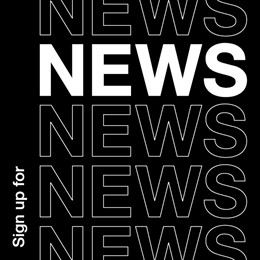Sound smarter: Why sonic branding needs a new identity

Gus Nisbet, head of creative strategy at MassiveMusic, explains the ways in which sonic branding, a crucial part of modern brand identity, is changing.
The sonic logo is dead. And that’s a good thing. Ok, that’s a bit sensationalist. It’s not dead, but it has become ubiquitous, which also means it’s less effective now. Competition breeds innovation, and the smartest brands know this.
The increasing saturation of ‘off-the-shelf’ sonic branding assets – sonic logo, brand anthem/DNA, mnemonic, jingle – is an opportunity. It’s a chance to be smarter about communicating values and increasing cultural relevance.
A sonic identity is more than just a suite of assets. It always has been. It’s a consistent strategy for evoking emotion, aligning with culture and telling stories that are relevant to your demographic. It’s never just about making distinctive brand assets. This is a start, but there needs to be a richer, more nuanced foundation for why these exist in the first place.
Gone are the days when the litmus test of ‘can I hum it back’ was a marker for how well a sonic logo would perform. This paints patterns that were successful 20 years ago (hello McD’s and Intel), but with myriad audio-enabled touchpoints today, it’s a myopic approach to a powerful medium.
Consider this; Nike doesn't have any bespoke sonic assets per se, but it has a strategic approach to licensing music that’s not just campaign by campaign. It’s a long-term view to creating cultural relevance through consistently selecting on-brand music.
Or Red Bull. Again, no bespoke sonic assets, and not even a consistent approach to licensing music, but it’s a powerhouse in music culture through initiatives like Red Bull Records, Culture Clash, Music Academy.
Still not convinced? How about Apple, often heralded as the most iconic brand of the last two decades. Firstly, Apple has an intricate audio language as UI sounds, from boot up to charging. Secondly, it’s lifted obscure artists to commercial fame through music licensing on hero campaigns – this gives Apple cultural credence in spades. Thirdly, the UI sounds have now transcended product to live in branded content as nods to the Apple experience, integrated like a sonic logo but with more potency due to cross-platform usage.
All brands make noise, but some do it with tact and consideration. Too often brands don’t interrogate where they currently make noise, assuming a sonic logo is the answer to a lack of strategy.
Up your game by starting with these jumping-off points:
- If you curate music for retail spaces, how does that relate to the music in your adverts?
- If you have a sonic logo, how does that support the sound in experiential/activations?
- If you’re embracing a certain style of storytelling, how do your music choices and artist
partnerships amplify that story?
- If your products make noise, how does this tie to your brand principles?
These questions are why we launched SoundCheck, a service that starts with a rigorous audit of the brand and industry, backed up by data. It allows us to pinpoint what approach will be most effective without jumping to conclusions.
Most brands know deep down there are many things they could do with music and sound, so before assuming a sonic logo is the correct path, think about the broader intention and the wider brand goals. You never know, it might lead to a completely different, and ultimately more effective, sonic strategy.













